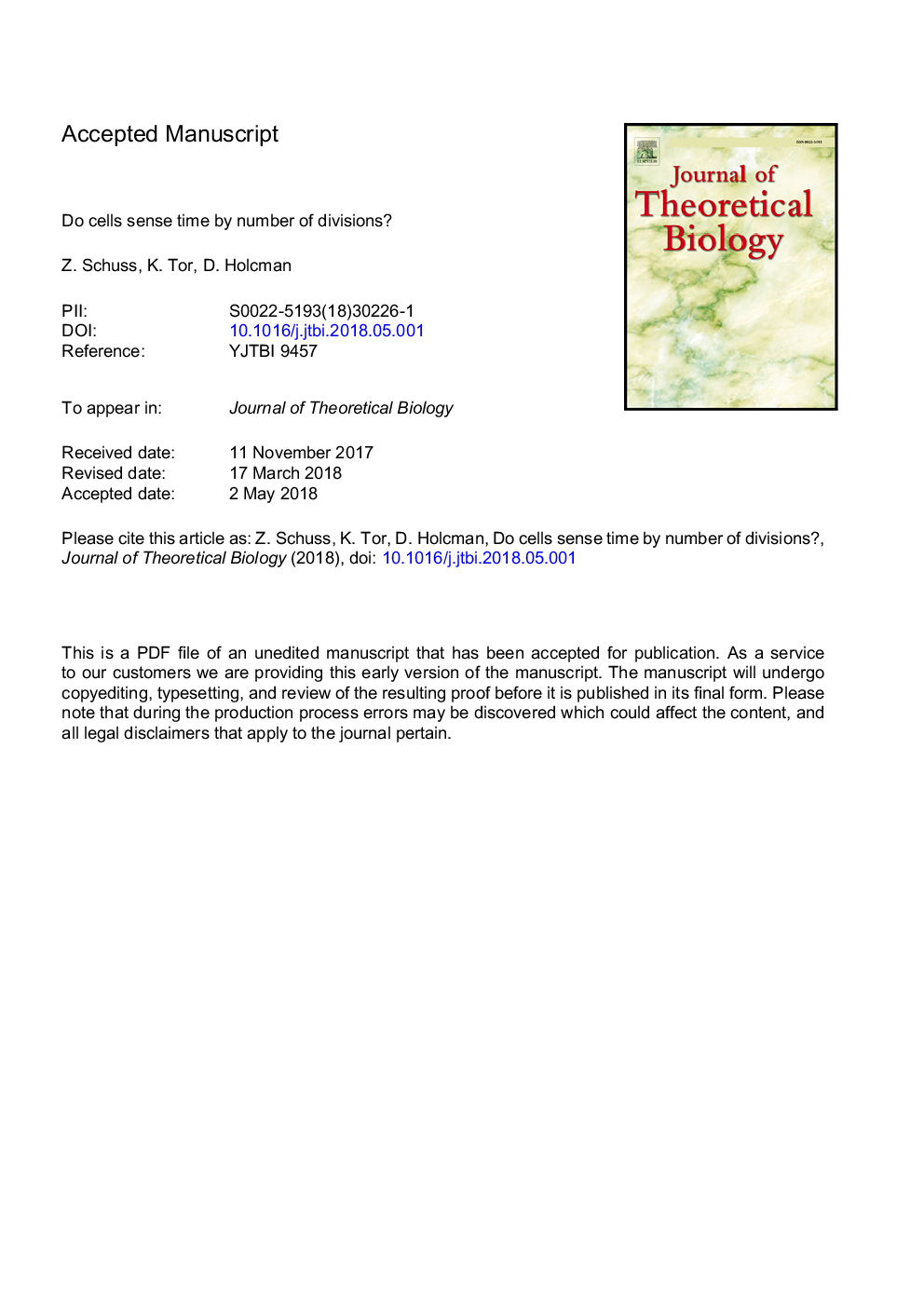| Article ID | Journal | Published Year | Pages | File Type |
|---|---|---|---|---|
| 8876620 | Journal of Theoretical Biology | 2018 | 18 Pages |
Abstract
Can the cell's perception of time be expressed through the length of the shortest telomere? To address this question, we analyze an asymmetric random walk that models telomere length for each division that can decrease by a fixed length a or, if recognized by a polymerase, it increases by a fixed length bâ¯â«â¯a. Our analysis of the model reveals two phases, first, a determinist drift of the length toward a quasi-equilibrium state, and second, persistence of the length near an attracting state for the majority of divisions. The measure of stability of the latter phase is the expected number of divisions at the attractor (”lifetime”) prior to crossing a threshold T that model senescence. Using numerical simulations, we further study the distribution of times for the shortest telomere to reach the threshold T. We conclude that the telomerase regulates telomere stability by creating an effective potential barrier that separates statistically the arrival time of the shortest from the next shortest to T. The present model explains how random telomere dynamics underlies the extension of cell survival time.
Related Topics
Life Sciences
Agricultural and Biological Sciences
Agricultural and Biological Sciences (General)
Authors
Z. Schuss, K. Tor, D. Holcman,
